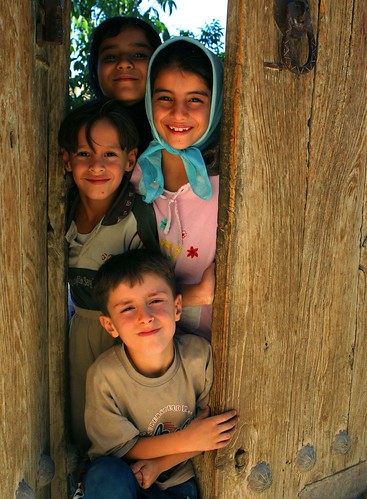Taipei Times fullpage layout and Hummingbird Yarn, above
writes Catherine Shu in the Taipei Times
[UPDATE: April 30 -- After reading the Taipei Times article, the official representative of Commercial Office of Peru in Taiwan contacted Anita and Kent and asked for an appointment to visit them and chat about possible business cooperation. Cool!]
TAIPEI -- APRIL 29, 2010 -- Husband and wife Kent and Anita Suarez both know how to spin a
good yarn. But when Kent spins a yarn, he literally spins yarn — with
wool roving on drop spindles. Anita ( 張婧楦, Chang Jing-shuan) began knitting and crocheting
three years ago and now teaches both crafts.
Last year, Anita, a Taipei native who majored in philosophy at Furen Catholic University in Hsinchuang, became frustrated with the lack of organic, hand-dyed
yarns for sale in Taiwan.
[Blogger's note: A philosophy major? "It's a subject that I decided to study when I was 12 years old," Anita told this blog.]
So the Suarezes did what fiber lovers dream about and launched
their own yarn company last summer.
Fittingly called Yarn Passions (炙愛毛線), the company specializes in
importing yarn harvested, prepared and spun using environmentally
friendly practices. Their current lineup features luxury fibers like
buttery merino, lofty Peruvian cotton and velvety baby alpaca. Kent
also hand-dyes yarn for Yarn Passions’ own label.
“In Taiwan, people tend to think that organic is only food,” says
Anita, 23. “But the fact is we can be organic while we are doing what we
like, too.”
Booday (蘑菇) and Earth Tree (地球樹), a fair-trade goods store, recently
began carrying products imported by Yarn Passions. The company also
sells yarn through its Web site from an international lineup of
suppliers, including Japan’s Mother Earth, Australia’s The Yarn Cafe
and Woolganic, Treliske Organic in New Zealand and Peru Naturtex
Partners. The latter is also labeled fair trade by FLO-CERT, an
inspection and certification organization.
“We were particularly interested in Peru because of the social
organization that works with farmers there to make sure that they have
a sustainable source of income other than growing drugs, for example,
and to make sure that the cooperatives and the indigenous people get
fair pay for what they do,” says Kent.
[Blogger's note 2: Kent, a Mexican-American man from Moline, Illinois, went to the University of Illinois for his undergraduate studies and to Ohio State University for grad school. His major? Industrial and organizational psychology. (He's been in Taiwan for over 15 years, having come here to learn Chinese and then deciding to stay and marry Anita. He works as an editor for several organizations and publications.]
Mother Earth, which enjoys a cult following among crafters in Japan,
dyes yarns using plant materials like herbs, acorns and tree bark.
Treliske Organic, a farm that supplies wool and meat, focuses on
humane animal husbandry.
“We are animal welfare volunteers, so we also care about how animals
are treated,” says Anita. In addition to their four pet cats (also
yarn lovers), the Suarezes are also currently fostering three stray
kittens.
Kent uses low-impact dyes and non-toxic mordants (substances used to
fix dye in fiber) for Yarn Passions’ eponymous label. He has created
variegated color ways with coffee bean grounds discarded by Starbucks
and tea leaves; he also wants to start growing plants that can be used
to produce pigments, including marigolds and onions, on the couple’s
balcony.
“I like making things from scratch, no matter what it is. I’m the kind
of person who would not just want to cook a meal, but want to make it
from scratch and grow the vegetables on my balcony and so on,” says
Kent. He adds: “If there were a sheep farm nearby I’d be out there
shearing the sheep.”
All of Yarn Passions’ dyeing is done in the Suarezes’ kitchen and
bathroom. Kent first re-skeins and binds the yarn before scouring it
to remove natural waxes and oil from the fiber, presoaks it to remove
air bubbles and then places the yarn in a carefully mixed dye bath
that is kept simmering for an hour until the color is absorbed.
Kent and Anita usually glean inspiration for their yarns from artwork,
but some Yarn Passions colors are the result of happy accidents.
Hummingbird, which mixes green, russet, cream and tan hues, was the
result of a dye bath that separated into two different colors.
While one of Yarn Passions’ specialties is colorful hand-dyed yarn (in
addition to Kent’s creations, they also sell variegated skeins from
the Yarn Cafe), the Suarezes are also excited about cotton with
naturally occurring pigment.
“Most people only know of white cotton, but naturally colored cotton
is making a resurgence among knitters globally,” says Kent.
Peru Naturtex Partners’ Pakucho Original 100% Organic Natural Color
Cotton yarn ranges from sandy browns to soothing creams and olive
greens. Unlike dyed yarns, naturally colored cotton won’t fade or
bleed; certain colors darken when washed.
In addition to eventually opening a studio for Anita’s classes and
Kent’s dyeing, the Suarezes hope to expand their company, import yarns
in higher volume so they can bring prices down, and increase the
number of outlets that carry their products. Anita plans to develop
educational seminars about organic and fair-trade fibers with Earth
Tree.
“Of course we are a business, we want to make a little bit of money,
but we also want to educate people that we are responsible for the
environment, that we have to take care of the environment and also the
animals,” says Anita.
To order yarn or arrange a class with Anita Suarez, visit Yarn Passions website ( written in both Chinese and English ) at:
http://tw.myblog.yahoo.com/yarnpassions-yarnpassions





































